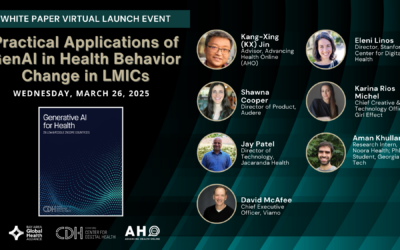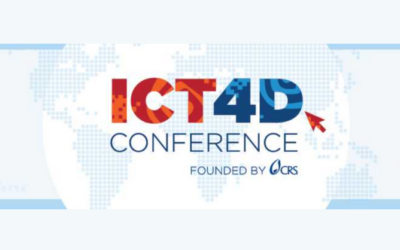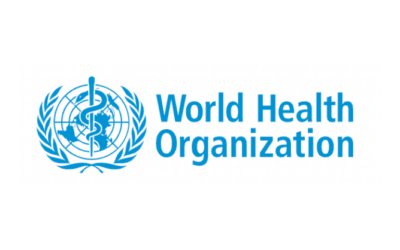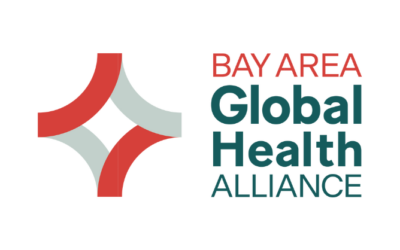Viamo Read More
Search
MEMBERS
- 19Labs
- AbbVie
- Accenture
- Africa Health Business
- AIfluence
- Airbnb
- Americares
- Ananya Health
- Antara International
- Baraka Impact Finance
- Boston Consulting Group
- CCBRT
- Cepheid
- Chevron
- Clinton Global Initiative
- Connective Impact
- Consortium of Universities for Global Health
- Cross-Border Impact Ventures
- Ending Pandemics
- ETR
- Fistula Foundation
- Friends of Chidamoyo
- Friends of the Global Fight
- GAIA Global Health
- Gilead Sciences
- Global Environment & Technology Foundation
- Global Fund for Women
- Global Health Corps
- Global Health Council
- Global Health Technologies Coalition
- Global Impact Advisors
- Global Strategies
- HealthAI
- Hesperian Health Guides
- HOPO Therapeutics
- Ideo.org
- Ipas
- John Snow, Inc.
- Kainomyx
- Kapnek Trust USA
- Kupona Foundation
- L.E.K. Consulting
- LivingGoods
- Mastercard
- Maya Health Alliance
- Medicines360
- MedShare
- Merck
- Meta
- Nivi
- North Carolina Global Health Alliance
- OmniVis
- OPHID
- PATH
- Pathfinder International
- Pendulum
- Pfizer
- Planetary Health Alliance
- Population Services International
- Public Health Institute
- Resonance
- ReSurge International
- Roche Diagnostics
- Sabin Vaccine Institute
- San Francisco Community Health Center
- Seed Global Health
- Simprints
- Stanford University
- — Stanford University Byers Center for Biodesign
- — Stanford University Center for Innovation in Global Health
- — Stanford University School of Medicine
- Street Business School
- Tiba Foundation
- UK Science & Innovation Network
- UNICEF
- University of California
- — UC Berkeley
- — UC Berkeley Center for Emerging and Neglected Diseases
- — UC Berkeley Haas School of Business
- — UC Berkeley School of Public Health
- — UC Davis
- — UC Davis Institute for Pandemic Intelligence
- — UC Global Health Institute
- — UCSF
- — UCSF Institute for Global Health Sciences
- UpSwell
- Viamo
- Vir Biotechnology
- Washington Global Health Alliance
- Watsi
- World Health Organization
- World Telehealth Initiative
- YLabs
- Zenysis
TOPICS
REGIONS
- Africa
- — Cameroon
- — Côte d’Ivoire
- — Ethiopia
- — Guinea
- — Kenya
- — Malawi
- — Mozambique
- — Niger
- — Rwanda
- —— Kigali
- Asia
- — Nepal
- — Pakistan
- — Bangladesh
- — Indonesia
- —— Bali
- — Israel
- Europe
- — Switzerland
- —— Geneva
- South America
- — Brazil
- North America
- — California
- —— Berkeley
- —— Los Angeles
- —— Sacramento
- —— San Francisco
- —— Stanford
- — New York
- —— New York City
- — North Carolina
- —— Durham
- — Washington
- —— Seattle
- — Washington D.C.
The Potential of GenAI for Health Behavior Change | Key Takeaways from the White Paper Virtual Launch
On March 26, the Bay Area Global Health Alliance hosted a virtual launch event for the recently released white paper, Generative AI for Health in Low and Middle-Income Countries, showcasing research conducted by Stanford Center for Digital Health (CDH), with support from Advancing Health Online (AHO). The discussion explored the five key findings from the research: 1) sharing learnings, 2) focusing on actionable measurement, 3) improving language and localization, 4) improving technical capacity and shared infrastructure, and 5) improving digital and basic health infrastructure.
ICT4D: Learning Carousel, Digital Development in Ghana
The ICT4D Conference explores how Information Communication Technology for Development (ICT4D) and data innovations are making a measurable difference in millions of peoples’ lives and increasing the impact of humanitarian relief, development, and conservation programs. The conference works to advance global knowledge exchange and build capacity on ICT4D and digital development to drive more impactful use of technology for good by facilitating knowledge exchange on best practices and innovations, creating inclusive spaces for cross-sectoral learning and capacity-building, and fostering partnerships in ICT4D among local and international actors (NGOs, governments, private sector organizations, research institutions, and funders).
AI Demystified: Practical Insights and Real-World Applications
On Wednesday, February 28 the Bay Area Global Health Alliance hosted AI Demystified: Practical Insights and Real-World Applications, the first virtual convening in its AI (artificial intelligence) and global health discussion series. The discussion explored how Alliance members PATH, Pendulum, and Viamo overcame challenges and leveraged AI’s transformative power to increase their global health impact.
Agriculture: Solidaridad and Viamo partner to provide digital power to farmers and workers
Viamo Read More
AI in SBC: the present and future potential
Join Springboard for the second session of their two part webinar exploring how social and behavior change (SBC) programs can use digital technology to gain insight to inform program design and implementation. This session will explore how AI is changing the digital landscape, as well as the opportunities and challenges with AI adoption in SBC. This includes how it powers big data, the ethical considerations and future potential. Speakers include Alliance member Viamo’s Senior Director of Strategic Partnerships, Lukas Borkowski, and the CEO and Founder of Quilt.AI, Anurag Banerjee.
Interactive Voice Response for Remote Health Worker Training
Join Population Services International and Viamo for their Interactive Voice Response (IVR) for Remote Health Worker Training event. The event will explore how learnings from a COVID-19 IVR training program for Community Health Volunteers in Kenya can inform future digital health programming – for the better.
Informal Gathering of Partners to Discuss Rural Healthcare Delivery | April 6, 2023
The Alliance hosted an informal gathering of members including: Fistula Foundation, Kapnek Trust Zimbabwe, Friends of Chidamoyo, UC Berkeley, UCSF Bixby Center for Reproductive Health, Stanford, MedShare, Viamo, and CCBRT Tanzania to share experiences in rural healthcare delivery. Digital innovations such as the Butterfly Ultrasound device, which attaches to a cell phone and provides access to specialists for image analysis, were discussed as critical for low-resources settings.
Our Members
Collaboration across sectors is necessary to solve global challenges We believe in the catalytic power of shared knowledge and collaboration across our sectors. The Bay Area Global Health Alliance is a membership organization and central network hub, bringing together...
WHA76 | Opportunity to Bolster Global R&D Capacity, Members Go to Geneva
“This year’s World Health Assembly represents a pivotal moment to advance policy reforms to deliver a more fit-for-purpose, equitable research and development (R&D) ecosystem,” stated the Global Health Technologies Coalition. To accelerate global health innovation and deliver health for all, they recommend WHO member states “take collective action now to establish more inclusive, globally distributed R&D systems and approaches.”
Informal Gathering of Partners to Discuss Rural Healthcare Delivery
The Alliance hosted an informal gathering of members including: Fistula Foundation, Kapnek Trust Zimbabwe, Friends of Chidamoyo, UC Berkeley, UCSF Bixby Center for Reproductive Health, Stanford University, and Viamo to share experiences in rural healthcare delivery. Digital innovations such as the Butterfly Ultrasound device, which attaches to a cell phone and provides access to specialists for image analysis, were discussed as critical for low-resources settings.









